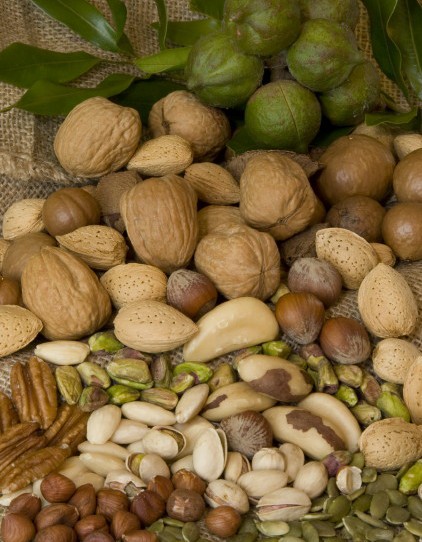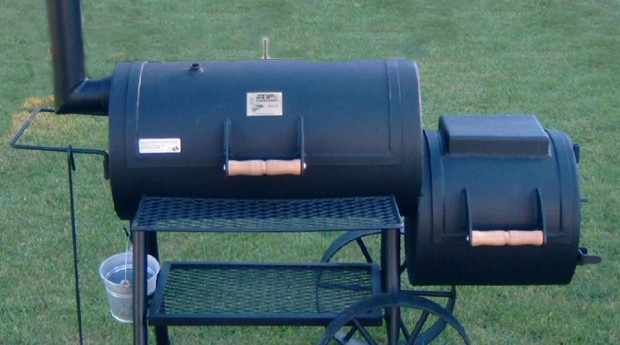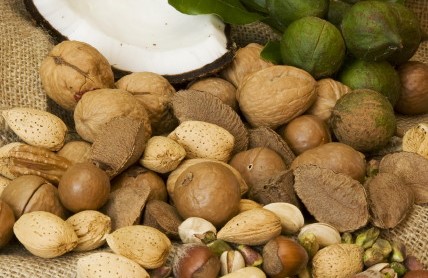Eating Organic Without Going Broke
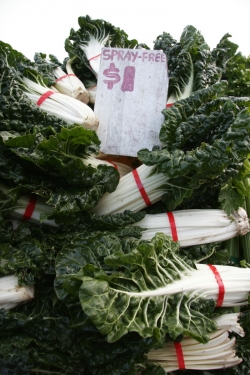
For many people who want to improve their health by eating more organic food, a major barrier is cost—organic versions of a given food are almost always more expensive than conventionally grown varieties. In some cases, such as tomatoes, the difference is not terribly great, perhaps less than a dollar per pound. In others, however, the gap can be massive. Thinking of having an organic turkey for Thanksgiving? Prepare to spend at least $60 for a medium-sized bird, or about three times what you would pay for Tom’s conventionally raised counterpart.
The solution is not to throw up your hands and assume that only the wealthy can eat organically. By prioritizing which foods you choose to eat organic, and by making a few fun changes in how you plan menus, you can incorporate a surprisingly large amount of healthful organic food into your diet year-round. Let’s look at some ways to maximize your organic food budget.
Easily Buy Directly From Small Organic Farmers
A growing number of small organic farmers offer seasonal shares of their harvest via what is called a CSA, for Community-Supported Agriculture. In most CSAs, you buy a share at the beginning of the growing season for a set amount; $400 is typical.
You then receive a weekly share of vegetables, fruits, and herbs, varying by what the farmer is harvesting that week. Shares are usually distributed from early June through late October, but they can start earlier or end later, depending on your location. Now that summer/fall CSAs have proved so popular, more farmers are offering winter shares. These usually involve a monthly share of root crops (potatoes, carrots, onions, etc.) that can be stored for long periods without refrigeration.
CSAs benefit farmers because they guarantee them an income and a market for their food. They benefit budget-minded consumers because, over the course of the growing season, you receive a variety and bounty of food that would cost more than the price of the share. A $400 share that includes 20 weekly harvests works out to an average of $20 per week. At the bookends of the seasons, you might be able to buy the components of your weekly share for less than $20. But come the peak of summer, when you are given pounds of fresh tomatoes, corn, peppers, cilantro, cucumbers, and other seasonal treats, it is hard to find a better food bargain.
To find a CSA farm in your area, see the Community Supported Agriculture (And Other Farm Subscriptions) directory(1) offered by Local Harvest, a Website devoted to promoting local, sustainable agriculture.
Do the Dirty Dozen
A big step in prioritizing which foods to eat organic is to focus on the produce items that have the most pesticide residue when conventionally grown. The nonprofit Environmental Working Group has tabulated data from tests of pesticide residue on 48 common types of produce; the tests take into account how the items are usually washed or peeled before being eaten. They then ranked the items from worst to best in pesticide residue, with the now-famous “dirty dozen” topping the list of most-residue-heavy produce.
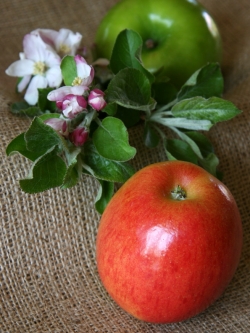
Whenever possible, if you are going to buy the following items, buy the organic version: apples, strawberries, grapes, celery, peaches, spinach, sweet bell peppers, imported nectarines, cucumbers, cherry tomatoes, imported snap peas, and potatoes.
In contrast, the following “clean 15” items have the lowest amount of pesticide residue: avocado, sweet corn, pineapples, cabbage, frozen sweet peas, onions, asparagus, mangoes, papayas, kiwi, eggplant, grapefruit, cantaloupe, cauliflower, and sweet potatoes. Although in an ideal world you would eat the organic versions of these, too, you can more safely regularly eat the conventionally grown versions than other produce.
For the complete list, see the Environmental Working Group’s wallet guide(2).
Frequent Farmers’ Markets
Besides not being available everywhere, CSAs aren not necessarily for everyone―some people like to choose exactly what foods they eat each week, and even the most devoted CSAer can get a little tired of share stalwarts such as kohlrabi and pok choi. You can achieve many of the same ends by doing as much of your produce shopping as possible at farmers’ markets. You will still be directly supporting local agriculture and getting organic food without a supermarket’s mark-up.
If you shop at farmers’ markets enough, you are likely to develop relationships with the farmers, who will then often cut you a deal on prices. You can also get good bargains in the closing half-hour of a farmers’ market, when the farmers are eager to unload their remaining produce rather than haul it back to their farm and risk it going bad.
To find farmers’ markets in your area, Local Harvest offers a great directory(3).
Grow Your Own
If you have the space and inclination, you can grow a surprisingly large amount of food in your yard. A single healthy tomato plant can produce what in the supermarket would cost more than $100 over the course of the plant’s life. Growing your own herbs takes even less space, and is even more of a money-saver. Finances aside, it does not get any fresher than picking something from your garden and featuring it in your next meal.
Organic Gardening magazine’s Website is full of practical advice on how to efficiently grow produce best suited to your area’s climate. They offer a number of articles(4) on organic growing techniques for commonly raised vegetable varieties.
Eat in Season
Like most other parts of the economy, food prices follow simple laws of supply and demand. If, for example, you live in the Northeast, a quart of organic strawberries can cost a small fortune in January; you will be paying partly for the cost of their being shipped from far away. In late June, when local fields are overflowing with berries, a quart will cost half as much.
You can maximize your organic food dollars by primarily eating what is in season. Besides being more cost-effective, this approach can be more satisfying to your taste buds, as anyone who has ever insisted on eating tomatoes through the winter can testify.
Eating seasonally available items is a given if you are getting most of your produce from a CSA, farmers’ market or your garden, because all that will be available is what is currently being harvested. But you can take the same approach at a supermarket and focus on the organic foods that are most available at that time of year. Choosing your food this way is a great way to be exposed to items you might not otherwise try. It can also make cooking and menu planning a pleasant adventure.
Rather than decide on a dish and then obtain the ingredients to make it, you will be more inclined to do like top chefs do―see what is available, and plan the menu from there. In summer, you will lean toward light, simple dishes; in winter, toward soothing soups and gratins, and will feel more in touch with nature’s cycles.
Choose Animal Products Wisely
John Bliss, an organic farmer in Scarborough, Maine, says, “The difference between organic and conventionally raised animals is much bigger than the difference between organic and conventionally grown produce.” That is, organic and conventional bananas are grown fairly similarly. Not so for organic and conventional chicken and other meat.
For a detailed look at the differences, read “What Do We Feed to Food-Production Animals? A Review of Animal Feed Ingredients and Their Potential Impacts on Human Health” by Sapkota et al. (2007) of the Institute for Applied Environmental Health, University of Maryland, published in Environmental Health Perspectives(5). The gist is that animals raised organically graze on the foods their bodies evolved to consume. Conventionally raised animals are primarily fed cheap items, including animal parts, their digestive systems are not equipped to process. In part to counter the effects of this improper diet, and in part to hasten their appearance at your supermarket’s shelves, some kinds of animals may receive antibiotics and growth hormones. It makes sense, then, to switch to organically raised animals for whatever meat you choose to eat.
Still, the best intentions can be tough to keep when an organic chicken costs upwards of $15. Let the price provide an incentive to have meat be more of a side dish than the main focus of one or two daily meals. Nutritionists recommend that a typical serving size be 3 ounces, which usually works out to roughly the size of a deck of cards. Taking this approach allows a piece of organic meat to last much longer.
You can also save by buying in bulk. For example, when we first published this article, Bliss offered a $275 poultry plan, delivered over several months, of 10 chickens, 20 dozen eggs and a $30 credit toward a Thanksgiving turkey. Other farmers offer price-per-pound discounts to regular customers, especially if you commit to buying from them regularly. A growing number of states have an association of organic farmers. See if yours does in the Organic & Sustainable Agriculture Associations listing(6) made available by the Maine Organic Farmers and Gardeners Association. You can also use the Farm-Grown Products directory(7) provided by the Organic Trade Association as a starting point for sources of organic poultry and other products.
Go Almost as Good as Organic
Finally, realize that there are important distinctions among conventionally raised produce. As Bliss says, “If you’re not going to buy from me, I’d rather you buy from the local conventional farmer than from one of the big organic corporations.” Bliss’s contention comes in part from environmental considerations, such as the amount of fuel used to ship organic produce from South America to the U.S. But it also has health consequences, because of the logistics of farming.
“A small, local conventional farmer is going to work his land pretty much the way I do,” Bliss says. “He knows he has only those 30 or whatever acres, and he needs to take care of them. So he’s not going to go crazy spraying his crops with pesticides. If he does, he’s risking that part of his land being invaded by pests that are resistant to the pesticides. He has a built-in incentive to raise his crops as naturally as possible.”
That being the case, it is possible to get further food bargains by following the above steps, such as shopping at farmers’ markets and eating seasonally, by buying from small, local farmers.
In fitness and health,
your friends from Take The Magic Step®
Reading and Video Suggestions:
- Uta’s Summary for Your Marathon Preparation. Part III: Nutrition
- Berries: Vibrant Flavors Bursting with Nutrition
References:
(1) Local Harvest: Community Supported Agriculture. www.localharvest.org/csa/, retrieved November 2011.
(2) Environmental Working Group: Shopper’s Guide to Pesticides in Produce. www.foodnews.org/walletguide.php, retrieved December 2014.
(3) Local Harvest: Farmers’ Markets. www.localharvest.org/farmers-markets/, retrieved November 2011.
(4) Rodale’s Organic Life: Garden. www.RodalesOrganicLife.com, retrieved May 2015.
(5) Sapkota AR, Lefferts LY, McKenzie S and Walker P: What Do We Feed to Food-Production Animals? A Review of Animal Feed Ingredients and Their Potential Impacts on Human Health. Environmental Health Perspectives 2007;115(5)663-670.
(6) Maine Organic Farmers and Gardeners Association: Links—Organic & Sustainable Agriculture Associations. www.mofga.org/Resources/
Links/tabid/146/Default.aspx#Org%20Sus%20Ag%20Orgs, retrieved November 2011.
(7) The Organic Pages: Organic Farm-Grown Products. www.theorganicpages.com/topo/commercialactivity.html?ca=farmgrownproducts,
retrieved November 2011.
Updated May 30, 2016
Updated May 15, 2015
Updated November 22, 2011
Posted November 2007
- Posted November 22, 2011
© Copyright 2007-2024 by Take The Magic Step®. All Rights Reserved.
